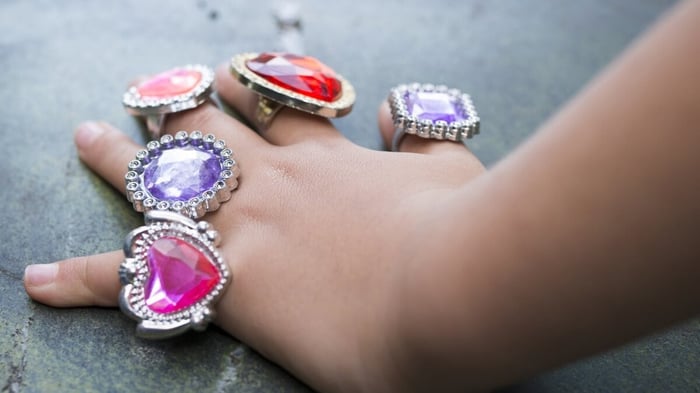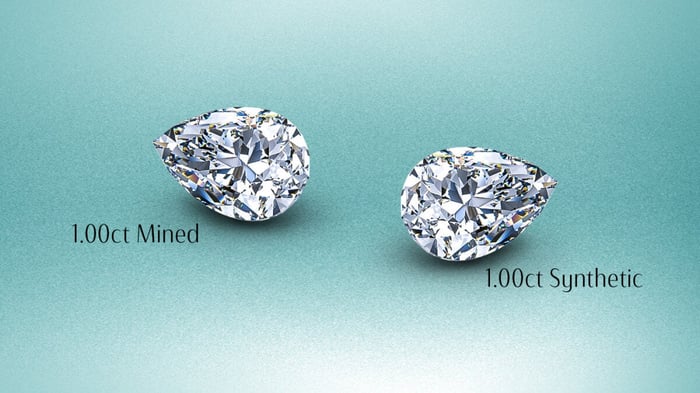All About Beautiful Black Diamonds
When you think of diamonds, you probably imagine a colourless brilliant-cut stone. But diamonds come in many colours, and today's celebrities are often seen wearing diamonds in various colours. Today we're going to look at one colour in particular - black diamonds.
We will answer many questions: Do black diamonds come from outer space? Are black diamonds valuable? How do black diamonds form? Why are we so obsessed with black diamonds?
Let's Learn More About Black DIamonds
As with a diamond of any colour, black diamonds are billions of years old there are some claims that black diamonds are younger, not having reached their full diamond potential; nothing could be further from the truth. Black diamonds were not considered valuable until recent times and were generally rejected by jewellers and used for industrial purposes.
Perhaps the spark that ignited the flame of our obsession with black diamonds was the appearance of a black diamond engagement ring in Sex and the City.
Why Are Black Diamonds Black?
The story of black diamonds begins deep inside the Earth in a layer called the mantle. This layer makes up over 80% of the Earth's volume and consists of crystalline, iron-rich rock.
It takes incredibly high temperatures and pressures to generate natural diamonds in their native state. There are just a few zones of the Earth's mantle where temperatures reach at least 1100 degrees centigrade, around 15 km or more below the surface. During deep source volcanic eruptions, diamond-bearing rocks known as Kimberlites are swept up by molten magma on their way to the surface, where the Kimberlites are redeposited.
Diamonds can be extracted from Kimberlites in deep mines or discovered in rivers and rocky or gravel deposits, where rough diamonds tend to aggregate once the kimberlite that surrounds them has been eroded away. Although this is the typical location where black diamonds are found, there have been some hypotheses that at least some black diamonds may have originated in space.
In addition to the conventional formation methods, two alternative theories are a little more out of this world. One way is through an asteroid collision. Throughout its history, the Earth has been struck by many asteroids. When these asteroids collide with the Earth, they generate tremendous temperatures and pressures that are sufficient to make diamonds in large quantities. It has been discovered that tiny diamonds have been found near several known asteroid impact sites, lending weight to this notion.
Diamonds From Outer Space
According to NASA experts, some meteorites in orbit have been found to contain considerable amounts of nanodiamonds measuring around a single nanometer in diameter. These are extremely little diamonds. A nanometer is a unit of measurement with a diameter of one billionth of a metre. It is estimated that just around three per cent of the carbon in these meteorites is in the form of nanodiamonds. These diamonds are not even large enough to be exploited for industrial reasons.
A billion-year-old black diamond, claimed to be the world's largest, was recently sold at auction by the Sotheby's auction house. The buyer paid $4.3 million in cryptocurrency. This 555.55 carat black diamond, dubbed the Enigma at the time of its discovery, is a carbonado diamond, making it one of a kind. Carbonado diamonds are exclusively discovered in Brazil and the Central African Republic in deposits near or on the Earth's surface. Although these territories are now separated, they were once united as the supercontinent Rodinia for more than a billion years. This, according to Sotheby's auction house, lends to the hypothesis that carbonados came from space because the area was thought to have been bombarded by meteorites while they were part of this supercontinent.
What Makes A Diamond Black?
You may be asking why black diamonds are black? The answer was only recently discovered.
Black diamonds are naturally black because of countless minute mineral inclusions. These can be graphite, hematite or pyrite, which can be found throughout the rough diamond. Black diamonds may also feature cleavages and fractures stained or turned black throughout the formation process due to graphitization. A natural black diamond's real body colour, without the inclusions and fractures, can range from almost colourless to brown to olive green. The concentration of these internal features gives these diamonds their dark appearance.
The majority of fancy coloured diamonds are coloured due to microscopic impurities added during the diamond's formation—nitrogen and boron impurities in the case of yellow and blue, respectively. The pink and red result from a more sophisticated transformation process. These shades arise because of a phenomenon known as plastic deformation. During the post-growth stage of a diamond's crystal lattice, where blocks of crystals slide over one another along distinct crystallographic planes, plastic deformation occurs at higher temperatures and pressures. Consider it similar to shuffling a deck of cards.
At extreme temperatures, the diamond atoms become mobile, and during the deformation process, they dislocate and slip. These irregularities change the way the electrons absorb light; therefore, they're responsible for creating pink, red, and brown coloured diamonds.
Blue Sapphire 1.50ct & 1.00ct G/SI Diamond Necklace in 18k White Gold

£2,442.00
£4,447.00
It is a significant statement jewellery and a great gift for a loved one. For that special occasion, look no more. The UK hallmarked 18k white gold necklace is the perfect choice for that special occasion. The blue sapphire in… read more
How Is The Quality Of A Black Diamond Assessed?
You may be thinking if pink, yellow, red and even some brown diamonds are considered fancy coloured, then black diamonds are too? Black diamonds are only called fancy black because there's no exact grading system for them, but they have to be grouped somewhere.
The four Cs of colour, clarity, cut, and carat weight form the standards devised by the GIA (Gemological Institute of America) for grading colourless to near colourless diamonds. Black diamonds fall outside this grading colour range, so their colour is evaluated using the GIA's colour grading system for coloured diamonds.
Furthermore, the GIA does not grade their clarity because black diamonds are opaque and usually heavily included. Also, there are no variations in the tone and saturation of a black diamond, unlike their other fancy coloured counterparts, so only the single grade term fancy black is used. Lastly, the GIA does not issue grading reports for these diamonds. Instead, they provide a coloured diamond identification and origin report. This report states that the diamonds are described as fancy black, and their colour is recorded as being natural or treated.
Unlike a colourless or fancy coloured diamond, a lot of the incident light is absorbed when light enters a black diamond. Black diamonds also have a very lustrous metallic appearance due to the metallic inclusions throughout the gemstone.
Black Diamonds Are Hard To Cut (And Look After)!
You probably know that cutting and polishing a regular white or fancy coloured diamond is a challenging and highly skilled craft. Black diamonds are even more so. All diamonds look very dull in the rough, just boring, grey pieces of rock. The diamond cutters and polishers reveal the beauty of any natural diamond. The graphite inclusions tend to make them even more brittle, and it can take up to 12 months for a diamond cutter to complete a faceted black diamond. This difficulty is probably why you've only heard of a handful of famous black diamonds. Black diamonds are just too hard to cut. Even if they were more easily found, they would remain rare and costly when used in jewellery!
If you are wealthy enough to own a genuine black diamond, you will need to look after it carefully! The fractures and fissures that permeate this gemstone render it very brittle and so care needs to be taken with the setting used and that it is not subjected to hard impacts. Cleaning should be done with care as well! Once again, the fissures and cracks can be opened up by ultrasonic shock waves that effectively clean most gemstones. Black diamonds cannot be cleaned using the ultrasonic cleaning equipment used to clean most forms of fine jewellery. These diamonds are too valuable to be allowed to shatter with careless cleaning.
Ruby & Diamond Tennis Bracelet 2.35ct in 18k Yellow Gold

£2,155.00
£3,597.00
This dazzling ruby and diamond bracelet makes an elegant gift or a decadent treat just for you. The intense red of the ruby creates a striking contrast to the sparkling ethically sourced G/SI quality diamonds. Set in 18k yellow gold… read more
Why Are We Obsessed With Black Diamonds Today?
Our opinion is that black diamonds are unique and dramatic, drawing collectors to them. As for the rest of us, not wealthy enough to afford them? Perhaps that is the magic - wanting what we cannot have?
A popular superstition in Italy is that just touching a black diamond can save a failing relationship because the diamond absorbs the problems.
It's said that if you touch a black diamond, the diamond will absorb your negativity and send it back to where it came from. Some say that the colour of the black diamond is linked to the emotions of the person who owns it. If a man owns a black diamond, he is considered an honourable and strong man.
At the end of the day, beauty is a subjective matter. At All Diamond, we love the look of black diamonds! We wish they could be priced at a level that made it possible to offer them to you in our fine diamond jewellery! To see our collections of fine diamond jewellery, please click this link.




